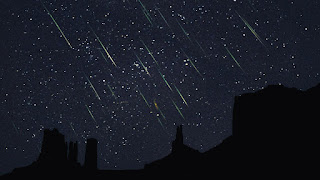The Spectacular Lyrids Meteor Shower: A Night Sky Event on April 21-22
The night sky has always been a source of wonder and mystery. Among the celestial events that captivate stargazers worldwide, meteor showers hold a special place. This blog post will focus on the spectacular Lyrids Meteor Shower that peaks between April 21 and 22.
Table of contents
What is a Meteor Shower?
A meteor shower is a celestial event where numerous meteors radiate from one point in the night sky. These meteors, also known as shooting stars, are caused by streams of cosmic debris called meteoroids entering Earth's atmosphere at extremely high speeds.
The Lyrids Meteor Shower
The Lyrids are one of the oldest recorded meteor showers, with observations dating back over 2,500 years. Named after the constellation Lyra, the Lyrids are known for their bright meteors and rare surges that can bring as many as 100 meteors per hour.
The Role of the Comet
The Lyrids Meteor Shower is associated with the Comet C/1861 G1 Thatcher. Comets are icy bodies in the solar system that release gas and dust when they come close to the Sun, a process known as outgassing. The Lyrids are the result of Earth passing through the dust trail left by this comet.
The Star of the Show
The star of the Lyrids show is undoubtedly the meteors themselves. As these meteoroids enter the Earth's atmosphere, they burn up, creating bright streaks of light across the sky. The Lyrids are particularly known for producing bright meteors, sometimes referred to as "fireballs".
Viewing the Lyrids Meteor Shower
The Lyrids Meteor Shower is visible from both hemispheres, and it's best viewed in a dark, clear sky. The shower usually peaks around April 22 or 23 each year. However, in 2024, the Lyrids are expected to peak between the night of April 21 and the morning of April 22.
Conclusion
The Lyrids Meteor Shower offers a spectacular display of shooting stars, making it a must-see event for astronomy enthusiasts and casual stargazers alike. So, mark your calendars for the night of April 21-22, find a dark spot away from city lights, and look up to witness this celestial spectacle!
*Please note: The visibility of meteor showers can be affected by factors such as light pollution and weather conditions. Always check local forecasts and visibility conditions before planning your stargazing activities.
You have read The Spectacular Lyrids Meteor Shower: A Night Sky Event on April 21-22






